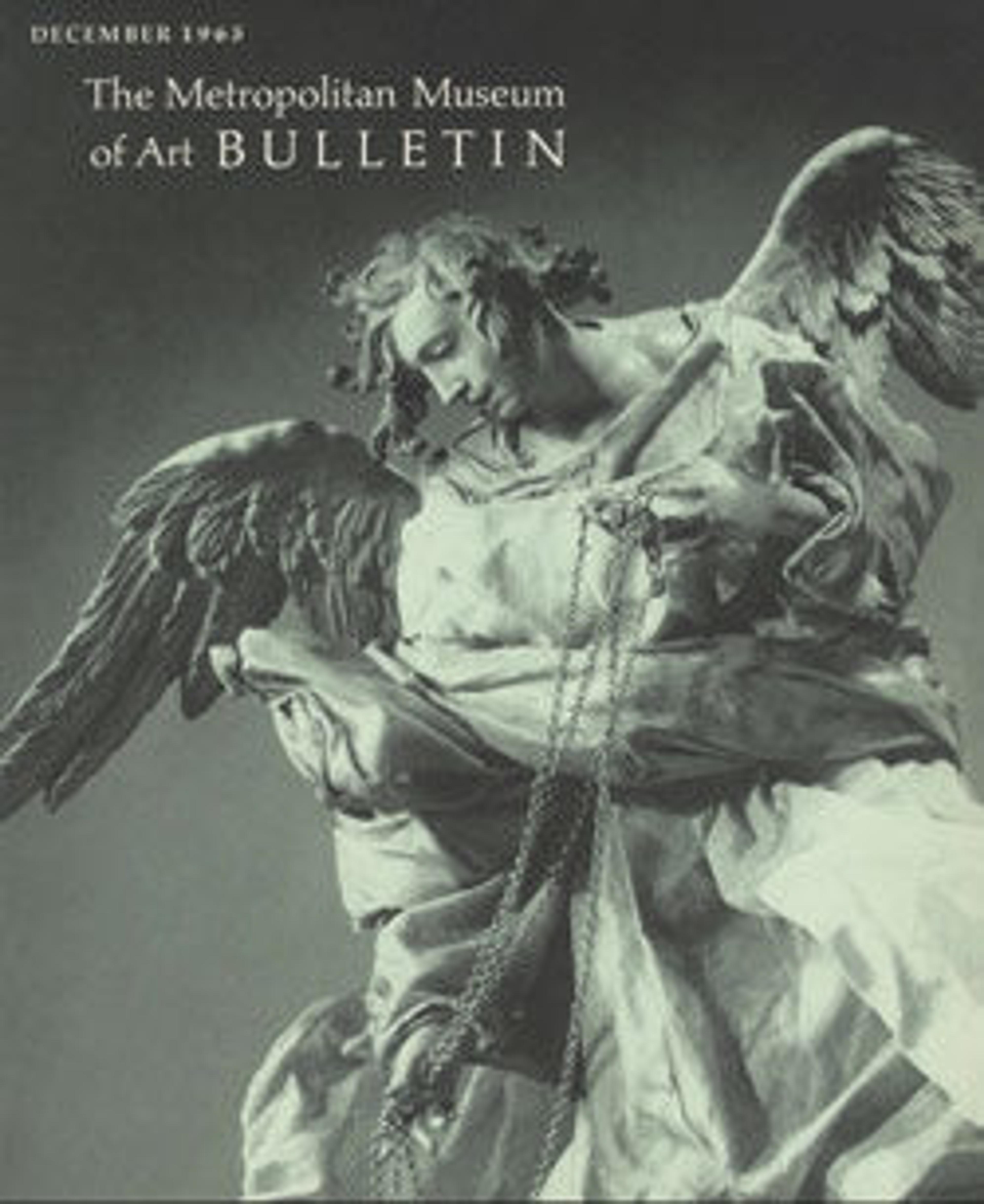Box Coffin and Rope
The earliest receptacles for the human body were large lidded baskets made from bound reeds (rather than woven fibers) or pottery containers. Before long, craftsmen began to fit short pieces of lumber together with a variety of carpentry techniques to make wooden coffins to fit the body in the contracted position that was common into the early part of the Old Kingdom. This early example was made from the wood of the tamarisk, a tree common to the Nile Valley. The sides, lid, and floor are constructed of narrow planks held together with tenons. These were slipped into a channel in the frame to form housing joints and the frame was then pegged together. An earth-toned plaster was applied to the exterior surface to smooth over imperfections in the wood and fill the spaces between the planks.
The long sides of the coffin are enhanced with a niched pattern meant to imitate a palace facade and thus identify the coffin as the house of the deceased. The lid is vaulted, as became traditional for many outer coffins and sarcophagi; this represents the roof of the per nu, the national shrine of Lower Egypt. The accompanying rope could have been used to lower the coffin into the tomb or to secure the lid to the box.
The long sides of the coffin are enhanced with a niched pattern meant to imitate a palace facade and thus identify the coffin as the house of the deceased. The lid is vaulted, as became traditional for many outer coffins and sarcophagi; this represents the roof of the per nu, the national shrine of Lower Egypt. The accompanying rope could have been used to lower the coffin into the tomb or to secure the lid to the box.
Artwork Details
- Title: Box Coffin and Rope
- Period: Old Kingdom
- Dynasty: Dynasty 3–4
- Date: ca. 2649–2465 B.C.
- Geography: From Egypt, Fayum Entrance Area, Tarkhan, BSAE excavations 1911-1913
- Medium: Wood (tamarisk), pigment, fiber
- Dimensions: L. 87 cm (34 1/4 in.); W. 54 cm (21 1/4 in.); H. 59 cm (23 1/4 in.)
- Credit Line: Gift of The Egyptian Research Account and British School of Archaeology in Egypt, 1912
- Object Number: 12.187.54a–c
- Curatorial Department: Egyptian Art
More Artwork
Research Resources
The Met provides unparalleled resources for research and welcomes an international community of students and scholars. The Met's Open Access API is where creators and researchers can connect to the The Met collection. Open Access data and public domain images are available for unrestricted commercial and noncommercial use without permission or fee.
To request images under copyright and other restrictions, please use this Image Request form.
Feedback
We continue to research and examine historical and cultural context for objects in The Met collection. If you have comments or questions about this object record, please complete and submit this form. The Museum looks forward to receiving your comments.
